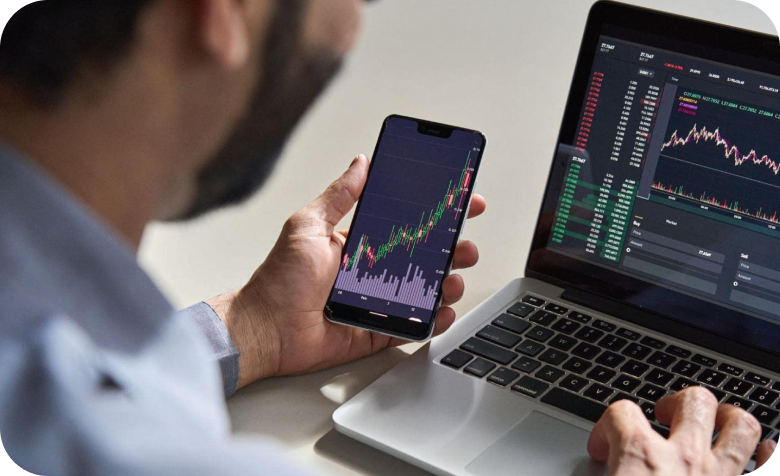- Formazione
- Analisi Tecnica
- Indicatori Tecnici
- Indicatori di Volume
- Accumulazione/Distribuzione
Indicatore Accumulazione/Distribuzione
Come si utilizza
L'Indicatore Accumulation Distribution Line è utilizzato per confermare il trend o indicare un suo indebolimento.
Conferma del trend:
- Quando A/D sale siamo di fronte a un trend al rialzo;
- Quando A/D scende siamo di fronte a un trend al ribasso.
Segnali di divergenza:
- A/D che sale mentre i prezzi scendono indica un possibile indebolimento del trend al ribasso;
- A/D che scende mentre i prezzi salgono indica un possibile indebolimento del trend al rialzo.

Indicatore Accumulation/Distribution (A/D)
Come si calcola
A/D(t) = [((C – L) – (H – C)) / (H – L)] x Vol + A/D(t-1), dove: A/D(t) – valore attuale di Accumulation/Distribution; A/D(t-1) – valore precedente di Accumulation/Distribution; H – prezzo massimo attuale; L – prezzo minimo attuale; C – prezzo di chiusura; Vol – volume.
Come utilizzare Accumulazione/Distribuzione sulla piattaforma di trading
Forex Indicators FAQ
What is a Forex Indicator?
Forex technical analysis indicators are regularly used by traders to predict price movements in the Foreign Exchange market and thus increase the likelihood of making money in the Forex market. Forex indicators actually take into account the price and volume of a particular trading instrument for further market forecasting.
What are the Best Technical Indicators?
Technical analysis, which is often included in various trading strategies, cannot be considered separately from technical indicators. Some indicators are rarely used, while others are almost irreplaceable for many traders. We highlighted 5 the most popular technical analysis indicators: Moving average (MA), Exponential moving average (EMA), Stochastic oscillator, Bollinger bands, Moving average convergence divergence (MACD).
How to Use Technical Indicators?
Trading strategies usually require multiple technical analysis indicators to increase forecast accuracy. Lagging technical indicators show past trends, while leading indicators predict upcoming moves. When selecting trading indicators, also consider different types of charting tools, such as volume, momentum, volatility and trend indicators.
Do Indicators Work in Forex?
There are 2 types of indicators: lagging and leading. Lagging indicators base on past movements and market reversals, and are more effective when markets are trending strongly. Leading indicators try to predict the price moves and reversals in the future, they are used commonly in range trading, and since they produce many false signals, they are not suitable for trend trading.
Utilizza indicatori dopo aver scaricato una delle piattaforme di trading, offerte da IFC Markets.
Ampia Scelta di Piattaforme di Trading per Tutti i Dispositivi

Not sure about your Forex skills level?
Take a Test and We Will Help You With The Rest


